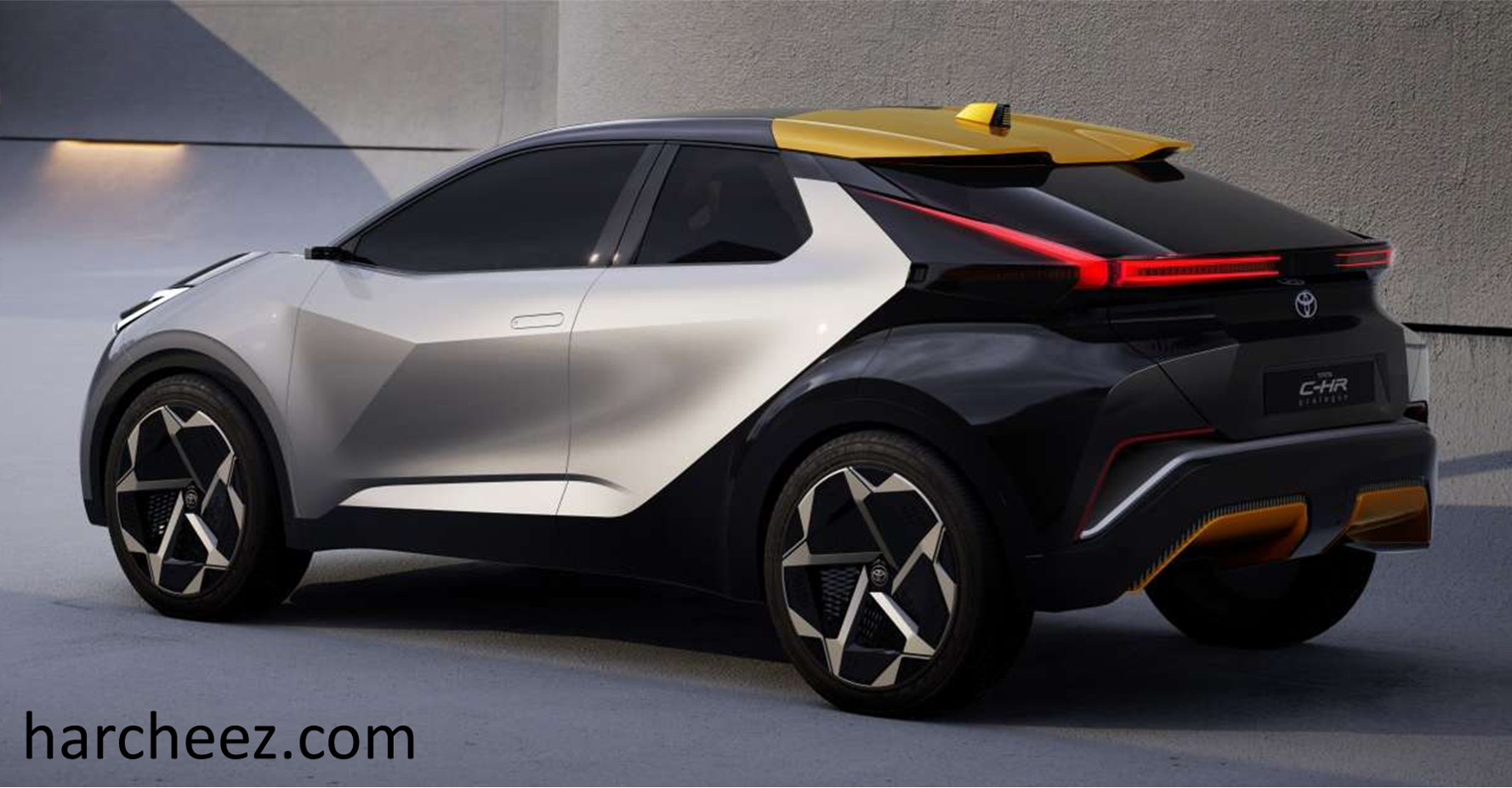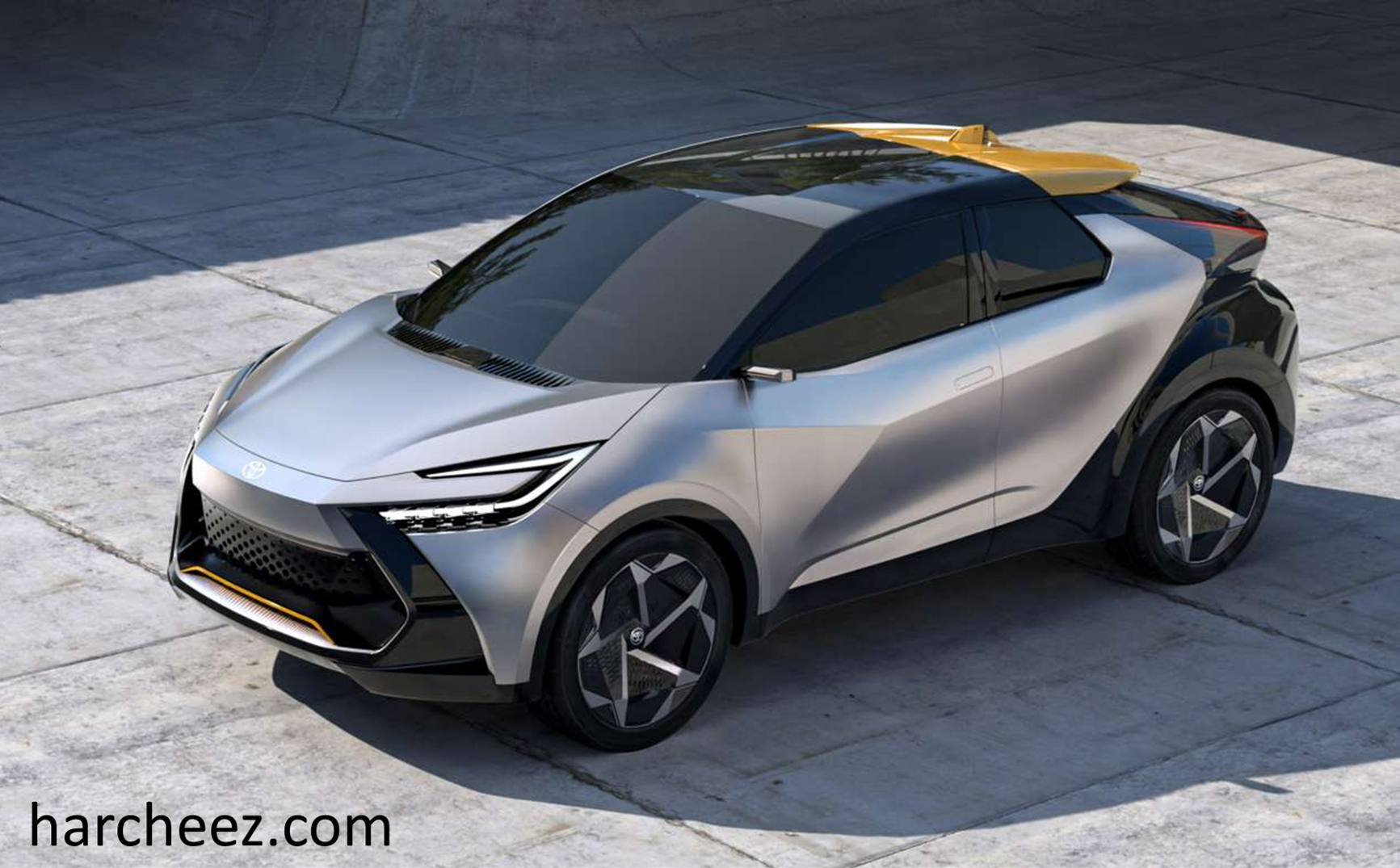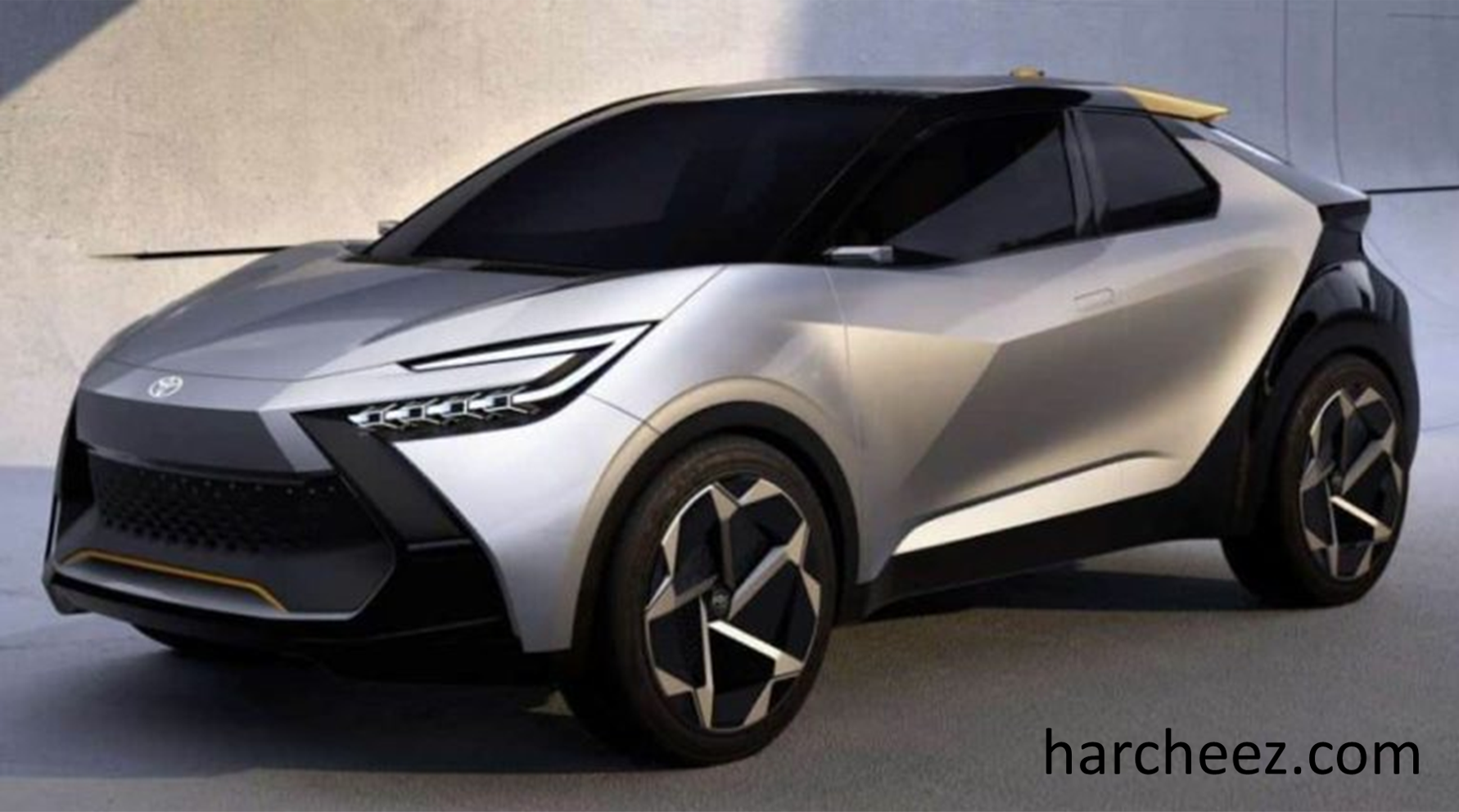The all-new C-HR concept, which highlights Toyota’s daring new design language, was introduced. The C-HR idea is the next generation of the C-HR, which first appeared a few years ago.
The new C-HR shares several design cues with the all-new Crown, Prius, Aygo X, and bZ4X, despite having a similar general form to its predecessor. With a bonnet that rises on the sides and dips in the middle, it features a front end like a sports car.

Air curtains and a little grille around the gaping mouth below. The front fascia, which is widened from the sides, acquires the nickname “Hammerhead.”
Large creases are produced by the front wheel arches, which meet in the center of the front doors and continue to the back. The door handles are now located near the taillights on the most recent C-HR model rather than the C-pillars as they were on the first C-HR. The front door handles extend as necessary and are flush with the automobile.
The manufacturing prototype is expected to differ from the typical concept characteristics, such as the large wheels and the side cameras in place of the mirrors. In contrast to “metal silver” and “recycled carbon,” the tri-tone paint scheme highlights the rearmost pillars with “sulphur.”
The dramatic appearance is continued with a rear wing that protrudes from two “bubbles” on the roof, full-width taillights, a sculpted tailgate, and a sizable rear diffuser. Toyota claims that this model has reduced overhangs, which may imply additional internal space as a result of a longer wheelbase.

A European self-charging plug-in hybrid powertrain will be used in the new C-HR. During a media conference in December, Toyota made a suggestion about the crossover’s all-electric drivetrain.
Although there is currently a lack of information surrounding its introduction, industry rumors indicate that the SUV will make its debut in late 2023 or early 2024.

